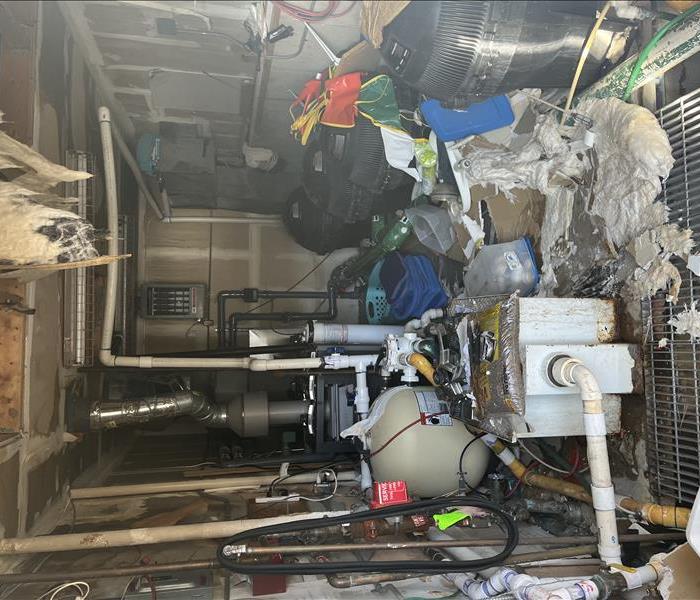Protecting Yourself During Water Damage Cleanup
6/12/2024 (Permalink)
Water damage can be a challenging experience for homeowners and property owners. Whether it's caused by a burst pipe, a leaking roof, or a severe weather event, prompt cleanup and restoration are essential to prevent further damage. During the cleanup process, it is crucial to prioritize your safety and well-being. In this blog, we will discuss important tips for protecting yourself during water damage cleanup to ensure a safe and effective restoration process.
Assessing the Situation
Before beginning the cleanup process, it is essential to assess the extent of the water damage. Identify the source of the water intrusion and determine whether it is safe to enter the affected area. If the damage is extensive or if there are safety concerns such as electrical hazards, it is advisable to seek professional help from water damage restoration experts.
Wearing Protective Gear
When dealing with water damage, wearing appropriate protective gear is crucial. Protective gear can help prevent exposure to potentially harmful contaminants and ensure your safety during the cleanup process. Some essential protective gear includes:
- Rubber gloves
- Rubber boots
- Safety goggles
- Disposable face masks
- Turning Off Utilities
Before starting the cleanup process, it is important to turn off utilities such as electricity and gas to prevent hazards. Water and electricity are a dangerous combination, so ensuring that the power is shut off before entering the affected area is critical for your safety.
Removing Standing Water
Removing standing water as quickly as possible is essential to prevent further damage and mold growth. Use a wet/dry vacuum, buckets, or pumps to extract water from the affected area. Be cautious when dealing with electrical appliances or wiring that may have been exposed to water.
Drying and Dehumidifying
After removing standing water, it is important to dry out the affected area thoroughly. Opening windows, and using fans, and dehumidifiers can help accelerate the drying process and prevent mold growth. Pay special attention to areas that are hard to reach or hidden from view, such as wall cavities and subfloors.
Cleaning and Disinfecting
Once the area is dry, thoroughly clean and disinfect all surfaces that came into contact with water. Use appropriate cleaning agents to sanitize and remove any contaminants or bacteria that may be present. Pay special attention to items that are porous and may need to be discarded if they cannot be effectively cleaned.
Monitoring for Mold
Even after cleanup and restoration efforts, it is important to monitor the affected area for signs of mold growth. Mold can develop quickly in humid environments and may pose risks to your proeprty. If you notice any signs of mold, consult with professional mold remediation experts to address the issue promptly.
In conclusion, protecting yourself during water damage cleanup is crucial for a safe and effective restoration process. By following safety precautions, wearing appropriate protective gear, and taking proactive steps to remove water and moisture, you can minimize risks and ensure a successful cleanup. If you require assistance with water damage restoration, contact SERVPRO® for professional and reliable restoration services.

 24/7 Emergency Service
24/7 Emergency Service
